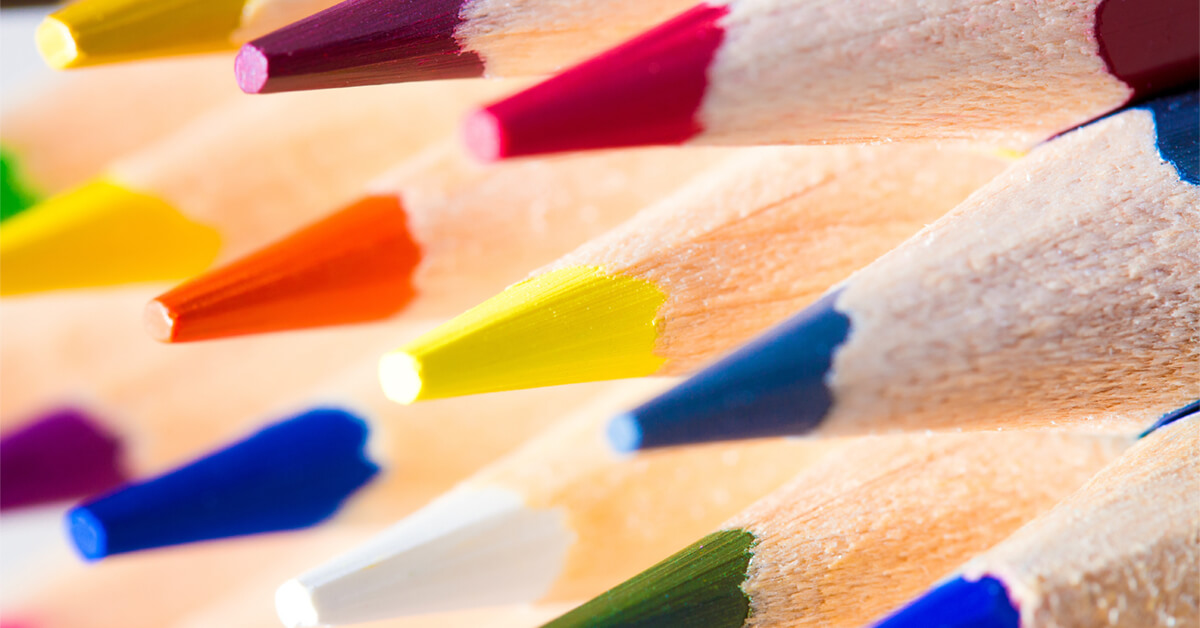In many installments of The Productivity Box series, we’ve talked about how the ergonomic features of a work environment can influence overall performance. We have examined the impact of light, sound, temperature, air quality, and more. But this month, we’re turning our attention to the powerful, dynamic connection between colors and the cognitive function.

If you’ve ever walked into a room and felt your mood shift in response to the colors in that space, you’ve encountered how the brain reacts to colorful stimuli. It’s not just your imagination—colors affect the way humans interact with physical surroundings. Researchers call this color psychology.
For this iteration of The Productivity Box, we’ll look at the science behind the use of color in the workplace and its influence on your mindset, emotions, and ability to focus.
The impact of color on your emotional state
A recent study in the Psychological Science Journal set out to determine if there are universal parallels in how different cultures all over the world emotionally react to specific colors. The researchers surveyed more than 4,500 respondents across 30 countries to discover that many had similar responses to seeing certain colors, despite their unique societal frameworks.
Here’s a basic rundown of the color-association results from this study:
- Red: 68 percent associated this color with love.
- Yellow: 52 percent associated this color with joy.
- Black: 51 percent associated this color with sadness.
- Pink: 20 percent associated this color with love.
- Orange: 44 percent associated this color with joy.
- White: 43 percent associated this color with relief.
- Green: 39 percent associated this color with contentment.
- Brown: 36 percent associated this color with disgust.
- Blue: 35 percent associated this color with relief.
- Purple: 25 percent associated this color with pleasure.
Of course, this is not an exact reflection of how every person feels across the board—human beings are complex, after all. But nuances aside, the research does offer a glimpse into how colors can nurture positive emotions. Or how they can intensify negative emotions, which directly impacts overall mood.
This is why it’s important to be selective about which colors are in your work environment. If a certain color scheme energizes and uplifts your mood, it can stimulate the brain’s limbic system or reward center. In turn, this will motivate you to perform and achieve, according to the Scientific Reports Journal.
However, colors that dim your emotions could result in more stress, anxiety, distractions, or errors on the job. So experiment with various color palettes around your workspace and notice how each combination makes you feel.
The impact of colors on your cognitive state
The ability to derive meaning from colors is due to your brain’s absorption of light on the visible spectrum. Eyes contain receptors that take in colorful wavelengths, which the brain interprets as data to make sense of your environment. In fact, 70 to 80 percent of all the visual information you process is obtained through color, reports the Brain Sciences Journal.
New research published in this journal examines the relationship between a color’s effect on brain arousal and the capacity for logical, detail, and lateral (creative) thinking. When your brain is aroused to the optimal level, you experience increases in:
- Alertness
- Concentration
- Decision making
- Attention span
- Memory
- Reaction time
- Emotional regulation
All of this enhances overall cognitive performance. The study reveals that short-wavelength colors, such as green and blue, are more likely to produce this high arousal state, thus sharpening mental acuity.
The impact of colors on performance
Another way that color influences cognitive function and performance is through the mind-body connection. Researchers call this chromotherapy. It’s based on the premise that certain color wavelengths can induce positive biological effects on your cells, molecules, and tissues. Here are a few examples:
- Red increases circulation in the body and oxygenation to the brain
- Yellow and orange stimulate the nerves to optimize energy levels
- Blue and violet create a soothing effect to reduce stress or inflammation
- Green helps stabilize the heart rate to promote a state of balance.
Chromotherapy is often used as a holistic treatment for medical issues, but it demonstrates how activating mechanisms in the body can stimulate brain processes too.
Hack your productivity with colors
The use of color in your workplace matters—and not only for aesthetic reasons. When you’re strategic with the visual elements around you, it can enhance your mood, alertness, creativity, focus, and overall performance, while also minimizing distractions or emotions that will inhibit productivity.
Think about the colors in your work environment right now. Do these shades inspire you to execute high-quality deliverables? Or do they cause agitation, stress, anxiety, over-stimulation, or fatigue? Consider where you need to make a few swaps and then check back in to see if this has supported your performance and productivity.
You might be surprised what a difference it makes! Just like any other small hack we’ve put to good work through The Productivity Box every month. Keep following for more 🙂
Post A Reply